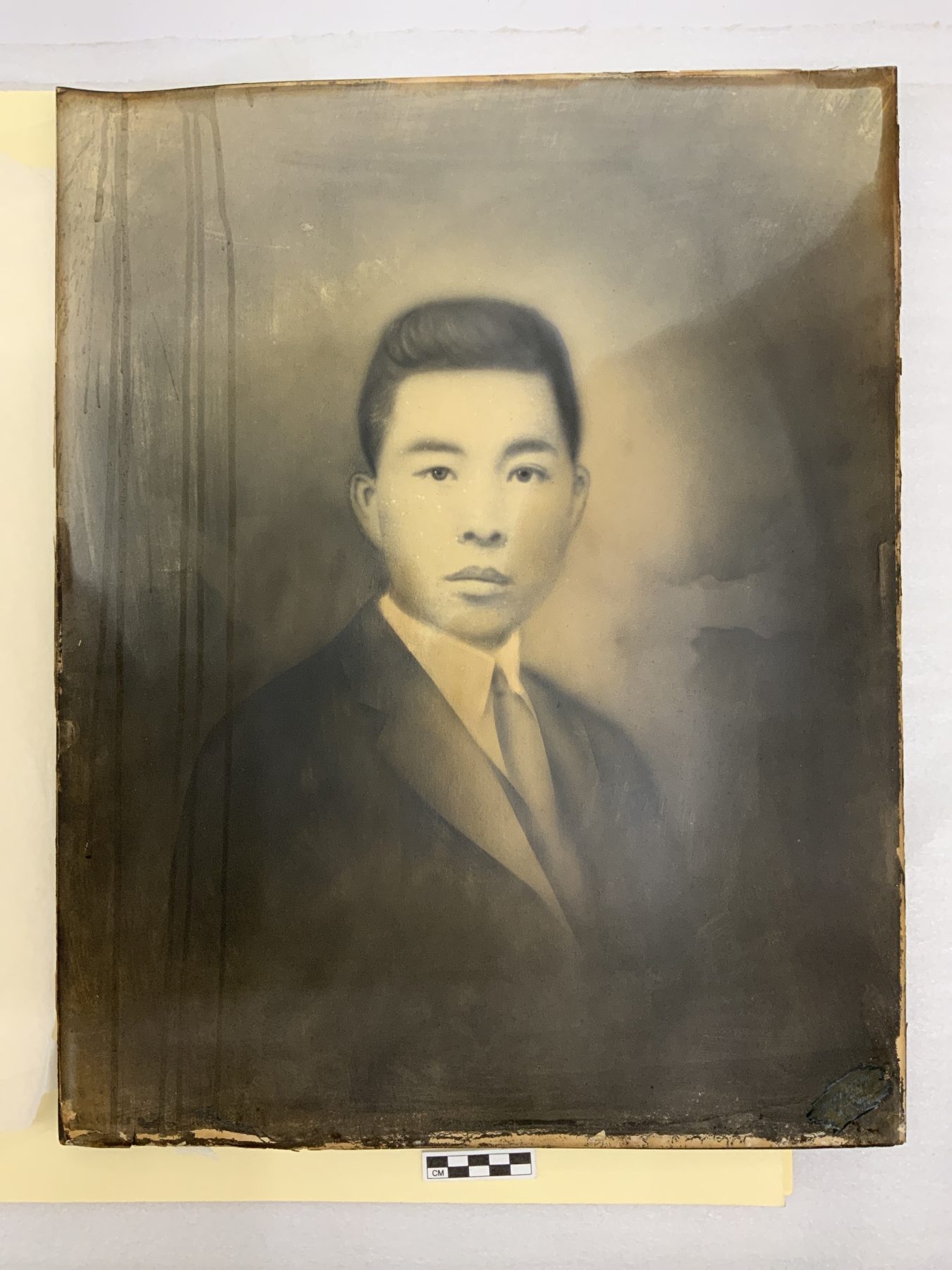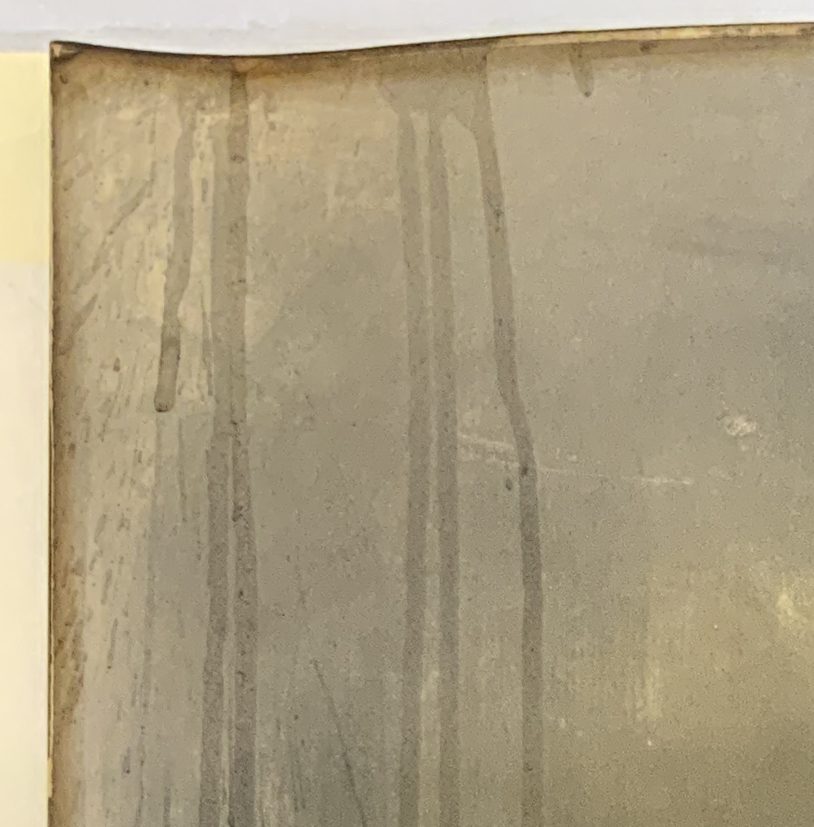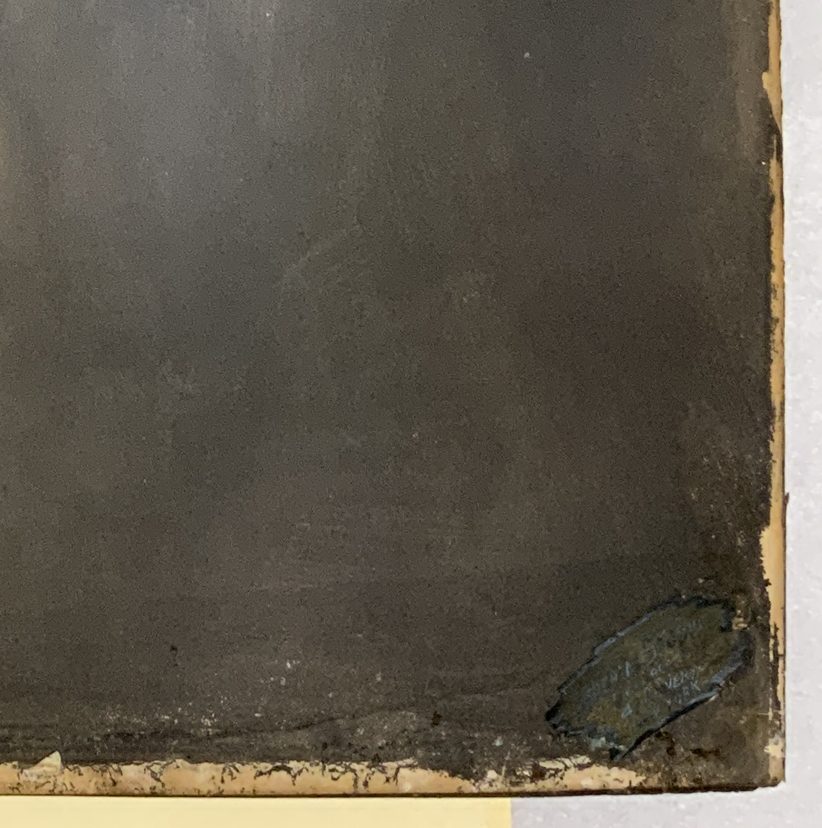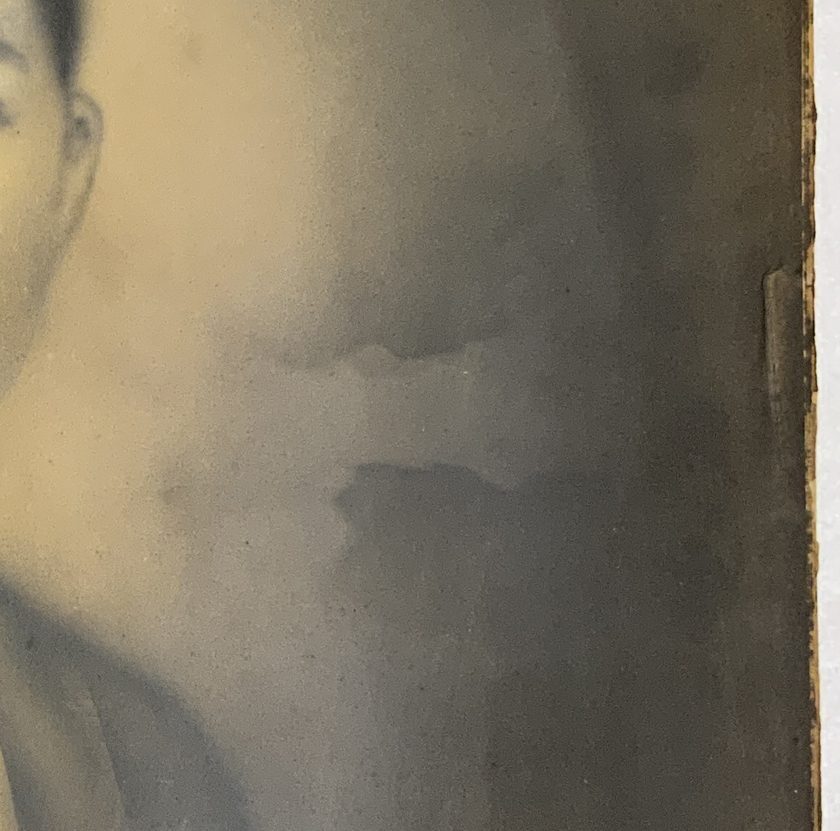The unidentified man in this portrait is likely one of the earliest family members of Marcella Dear, the donor of this piece, to settle in New York Chinatown in the latter half of the 1800s. Marcella’s family, the Chins, opened and operated a number of businesses, including the Kwong Chong general store and famed Rice Bowl Restaurant at 44 Mott Street. A printed label attached to the portrait tells us that it was rendered at Imperial Studio at 42 Bowery, and the hybrid photographic/art process used to make it dates it to between the 1860s and 1910s, when crayon portraits such as this enjoyed popularity. Crayon portraits were made by using a solar enlarger and sunlight to project a small negative onto a larger sheet of bromide, silver or platinum-based photo paper. The resulting image from this early technology was usually only lightly printed, requiring the crayon portrait artist to retouch and strengthen the image with crayons, charcoal, and paints, thus producing a photographic image that also looked hand drawn.
More affordable because easier and quicker to produce than paintings requiring long sittings, crayon portraits made large-size portraits, once available to only the wealthiest of patrons, more mass accessible. They were nonetheless valued. This portrait, like others of its kind, was framed in a large gilded, or ornately decorated frame and would have been hung prominently and then subsequently passed down within the family.
Because of its medium, crayon portraits require extra care if they are to be well-preserved for the long term. As with this portrait, it was common to mount the photo paper to an acidic board that over time becomes brittle and prone to cracking. The surfaces of crayon portraits are also easily scratched and prone to fading with exposure to light. Your support would enable us to repair and archivally house this unique and possibly rare piece of family and photographic history.



